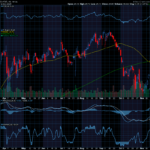- War of 1812: Declared June 18, 1812
No readily available SP‑500 data (index begins in 1957), but historically, the War of 1812 disrupted international trade and likely weighed on markets. - Mexican–American War: Declared May 13, 1846
Pre‑modern markets; difficult to quantify direct effects. - Spanish–American War: April 25, 1898
Late‑19th‑century markets saw a brief uptick in defense and commodity stocks, though broader indices were nascent. - World War I declarations:
- Germany – April 6, 1917
- Austria-Hungary – December 7, 1917
The Dow fell ~6% in April 1917, recovered mid‑year, then dropped again after the winter declaration.
- World War II declarations:
- Japan – December 8, 1941
- Germany/Italy – December 11, 1941
The Dow dropped ~3–5% in the days following Pearl Harbor but rebounded quickly and began a sustained rally.
- Korean War: June 1950
The broader market experienced volatility, with the Dow down ~10% by summer 1950 due to uncertainty. - Vietnam War (Gulf of Tonkin Resolution): August 1964
Markets were already in a corrective phase in mid‑1964; war escalation added pressure, contributing to stagnation into 1966. - Gulf War: January 1991 (Operation Desert Storm began)
The S&P 500 dipped slightly early in 1991 but launched into a sustained bull run soon after the end of combat. - Afghanistan (War on Terror): October 7, 2001
Markets were already reeling from the dot‑com crash and 9/11. The S&P fell about 14% by Nov 2001, then rallied strongly in 2003. - Iraq War: March 20, 2003
The S&P showed heightened volatility but continued its upward trajectory, rising roughly 30% from early 2003 to end‑2004. - Recent Middle East Operations (e.g., strikes in Yemen, Syria, Iran tensions 2015–2025)
These have produced short-lived market jitters (~1–2% drops), usually recovered swiftly within days.
(article created using Chat GPT)












Recent Comments